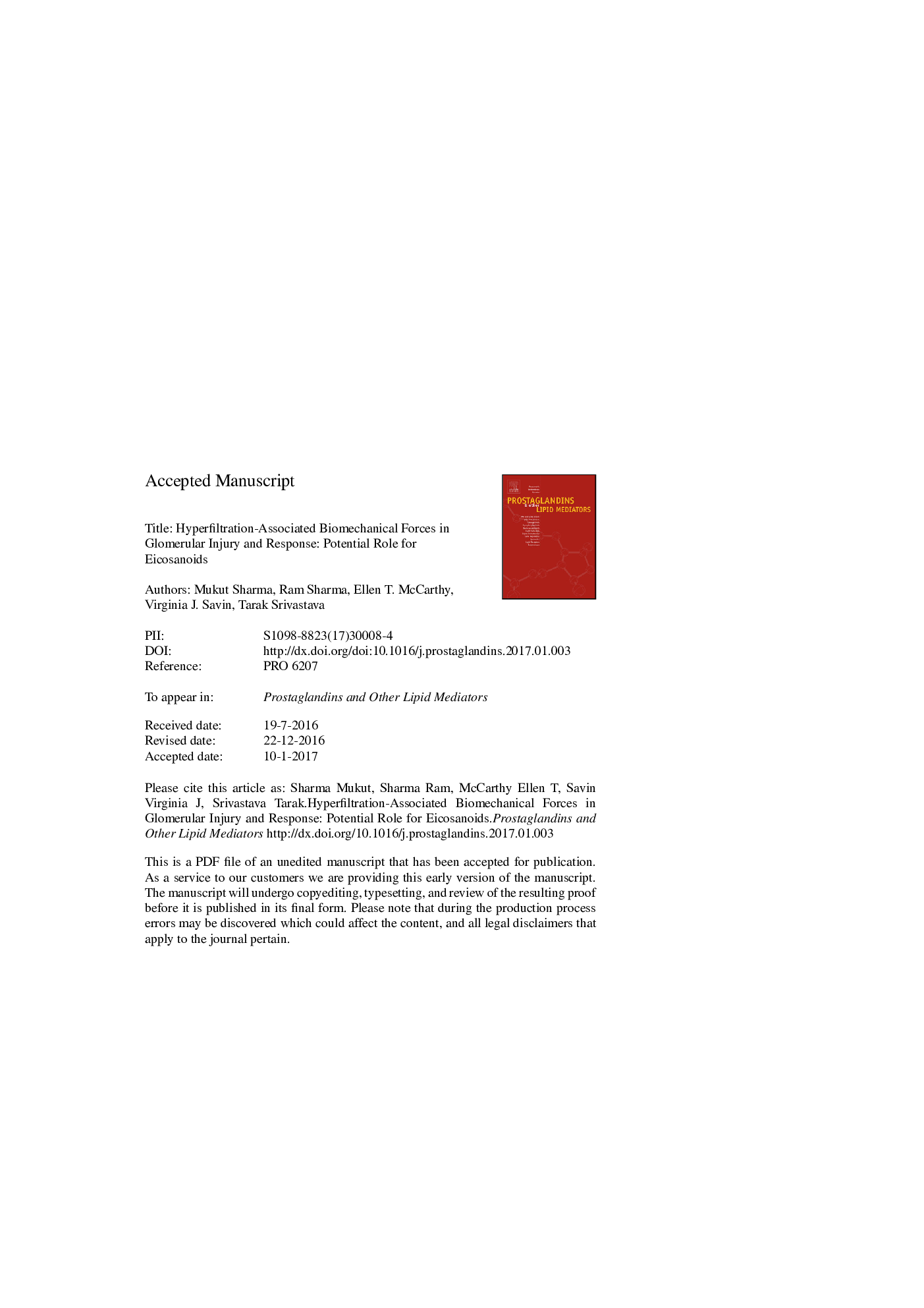| Article ID | Journal | Published Year | Pages | File Type |
|---|---|---|---|---|
| 8359174 | Prostaglandins & Other Lipid Mediators | 2017 | 38 Pages |
Abstract
Hyperfiltration is a well-known risk factor in progressive loss of renal function in chronic kidney disease (CKD) secondary to various diseases. A reduced number of functional nephrons due to congenital or acquired cause(s) results in hyperfiltration in the remnant kidney. Hyperfiltration-associated increase in biomechanical forces, namely pressure-induced tensile stress and fluid flow-induced shear stress (FFSS) determine cellular injury and response. We believe the current treatment of CKD yields limited success because it largely attenuates pressure-induced tensile stress changes but not the effect of FFSS on podocytes. Studies on glomerular podocytes, tubular epithelial cells and bone osteocytes provide evidence for a significant role of COX-2 generated PGE2 and its receptors in response to tensile stress and FFSS. Preliminary observations show increased urinary PGE2 in children born with a solitary kidney. FFSS-induced COX2-PGE2-EP2 signaling provides an opportunity to identify targets and, for developing novel agents to complement currently available treatment.
Keywords
Related Topics
Life Sciences
Biochemistry, Genetics and Molecular Biology
Biochemistry
Authors
Mukut Sharma, Ram Sharma, Ellen T. McCarthy, Virginia J. Savin, Tarak Srivastava,
